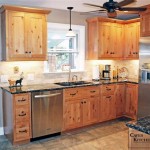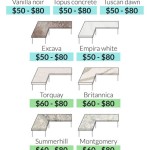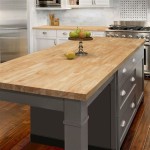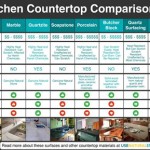Formica Countertop Cost Per Sq Ft: A Comprehensive Guide
Formica countertops, a staple in residential and commercial spaces for decades, are known for their durability, versatility, and affordability. Understanding the cost dynamics associated with Formica countertops requires a detailed examination of several influencing factors, including material grades, installation complexities, and regional price variations. This article provides a comprehensive overview of Formica countertop costs per square foot, aiming to equip readers with the knowledge necessary to make informed decisions.
Formica, technically a brand name but often used generically to refer to laminate countertops, is a manufactured material composed of layers of paper or fabric saturated with resin. These layers are fused under high pressure and heat, creating a solid surface. The top layer, often featuring a decorative pattern or color, is coated with a melamine resin that provides scratch and stain resistance. The overall construction is designed to offer a cost-effective alternative to natural stone or solid surface materials.
One of the primary advantages of Formica countertops is their broad range of aesthetic options. Available in numerous colors, patterns, and textures, Formica can mimic the appearance of granite, marble, wood, and other premium materials. This design flexibility allows homeowners and businesses to achieve desired aesthetics without incurring the high costs associated with natural stone or solid surface alternatives.
The cost calculation for Formica countertops involves several components, including the cost of the material itself, fabrication expenses (cutting and shaping the laminate), and installation charges. These elements can fluctuate based on the project's complexity, geographic location, and the specific Formica grade selected. A meticulous assessment of these factors is crucial for accurately estimating the overall project expenditure.
Key Factors Influencing Formica Countertop Cost
Several key factors directly influence the per-square-foot cost of Formica countertops. These factors encompass the grade of laminate, the substrate material used, the complexity of the countertop design, and the installation requirements. A clear understanding of these variables is essential for budgeting effectively.
Grade and Thickness of Laminate:
The thickness and quality of the laminate significantly impact the cost. Thicker, higher-grade laminates typically offer enhanced durability and resistance to scratches and impacts. These premium options command a higher price per square foot compared to standard-grade laminates. High-definition laminates with intricate patterns or realistic textures often incur additional costs.
Substrate Material:
Formica laminate is not a self-supporting material and must be bonded to a substrate, usually particleboard or plywood. The choice of substrate influences the cost and performance of the countertop. Plywood is generally more expensive than particleboard but offers superior resistance to moisture and warping. The substrate thickness also plays a role; thicker substrates provide greater stability but increase the overall cost.
Complexity of Design and Fabrication:
Intricate countertop designs with curved edges, custom shapes, or integrated features such as backsplashes or drain boards increase fabrication costs. These complexities require specialized tools and skilled labor, leading to higher per-square-foot charges. Simple, rectangular countertop designs are generally the most cost-effective option.
Installation Costs:
Installation costs can vary widely depending on the complexity of the project and the installer's rates. Factors such as the removal of existing countertops, the need for plumbing or electrical modifications, and the distance to the job site can influence the overall installation expenditure. Obtaining multiple quotes from qualified installers is crucial for securing a competitive price.Typical Cost Ranges for Formica Countertops
The cost of Formica countertops can vary significantly based on the factors discussed above. Generally, the cost per square foot ranges from approximately $15 to $40 installed. This range encompasses standard-grade laminates with basic designs and professional installation.
Low-End Laminates:
At the lower end of the spectrum, basic Formica laminates with simple patterns and standard-grade particleboard substrates can be installed for around $15 to $25 per square foot. These options are suitable for budget-conscious projects or applications where durability is not a primary concern.
Mid-Range Laminates:
Mid-range Formica laminates, featuring more intricate patterns, enhanced textures, and plywood substrates, typically cost between $25 and $35 per square foot installed. These options offer a good balance of aesthetics, durability, and affordability.
High-End Laminates:
High-end Formica laminates, including premium grades with realistic stone or wood textures, custom edge profiles, and specialized substrates, can cost $35 to $40 or more per square foot installed. These options provide a luxurious appearance and enhanced durability, making them suitable for high-end residential or commercial applications.It is important to note that these cost ranges are approximate and can vary based on local market conditions and specific project requirements. Obtaining detailed quotes from multiple suppliers and installers is essential for accurately estimating the cost of a Formica countertop project.
Additional costs that may arise during a Formica countertop project can include the removal and disposal of existing countertops, plumbing or electrical modifications to accommodate new sinks or appliances, and the cost of edging or trim to finish the countertop edges. These supplementary charges should be factored into the overall budget to avoid unexpected expenses.
When comparing quotes from different suppliers and installers, it is crucial to ensure that all quotes include the same scope of work. This ensures that the comparison is based on equivalent services and materials, allowing for a fair and accurate assessment of the cost. Be sure to inquire about warranties and guarantees offered by the supplier and installer.
DIY vs. Professional Installation
While DIY installation of Formica countertops is possible, it requires specific skills and tools. A lack of experience can lead to errors that compromise the countertop's appearance and performance. Professional installation, although more expensive, ensures proper fit, finish, and durability.
DIY Installation:
DIY installation can save on labor costs, but it requires proficiency in cutting, bonding, and finishing laminate materials. Errors in cutting or bonding can result in unsightly seams or delamination. Additionally, improper installation can void warranties offered by the manufacturer. DIY installation is best suited for those with prior experience in countertop installation or those who are comfortable working with laminate materials. It is crucial to carefully follow the manufacturer's instructions and use appropriate tools and adhesives.
Professional Installation:
Professional installation ensures that the countertop is properly measured, cut, and installed, minimizing the risk of errors and maximizing the countertop's lifespan. Professional installers typically have the necessary tools and expertise to handle complex designs and installations. The added cost of professional installation provides peace of mind and can prevent costly repairs or replacements down the line. Before hiring a professional installer, it is advisable to check their credentials, read reviews, and obtain multiple quotes.The decision between DIY and professional installation depends on the homeowner’s or business owner’s skills, budget, and risk tolerance. For complex designs or situations where a high-quality finish is essential, professional installation is generally the better choice. For simple designs and budget-conscious projects, DIY installation may be a viable option.
In conclusion, assessing the cost per square foot for Formica countertops involves considering a variety of factors. By understanding the different grades of laminate, substrate options, design complexities, and installation considerations, individuals can more accurately estimate the overall expenses associated with their countertop project. Whether opting for DIY or professional installation, meticulous planning and attention to detail are crucial for achieving satisfactory results and maximizing the value of the investment.

Cost To Install Kitchen Countertops Countertop Replacement Fixr

How Much Do Formica Countertops Cost 2025 S

How Much Do Formica Countertops Cost 2025 S

Hampton Bay 8 Ft Straight Laminate Countertop In Textured White Ice Granite With Eased Edge And Integrated Backsplash 011349010809476 The Home

How Much Do Solid Surface Countertops Cost 2025 S

The Cost Of Kitchen Countertops A Guide To Budgeting For Your Remodel

Er S Guide Laminate Countertops Formica Group

How Much Does It Cost To Install Laminate Countertops 2025 Data

Cost To Install A Countertop The Home

Hampton Bay 8 Ft Straight Laminate Countertop In Textured White Ice Granite With Eased Edge And Integrated Backsplash 011349010809476








